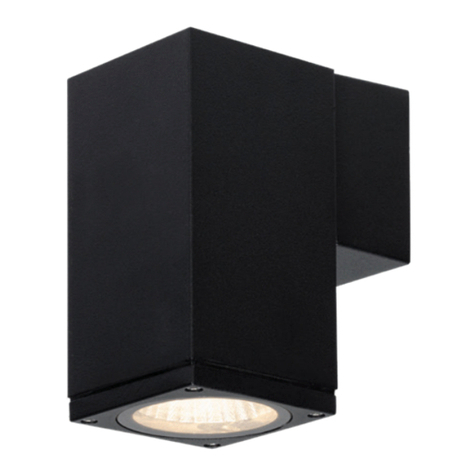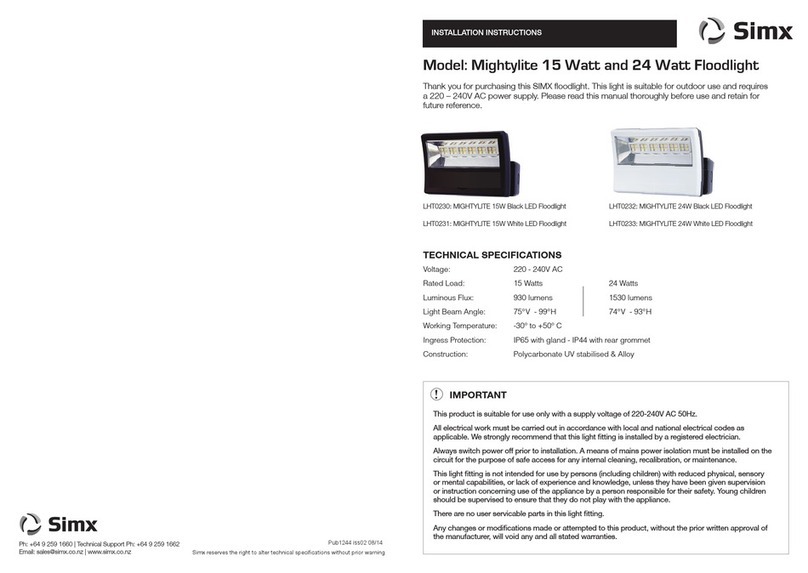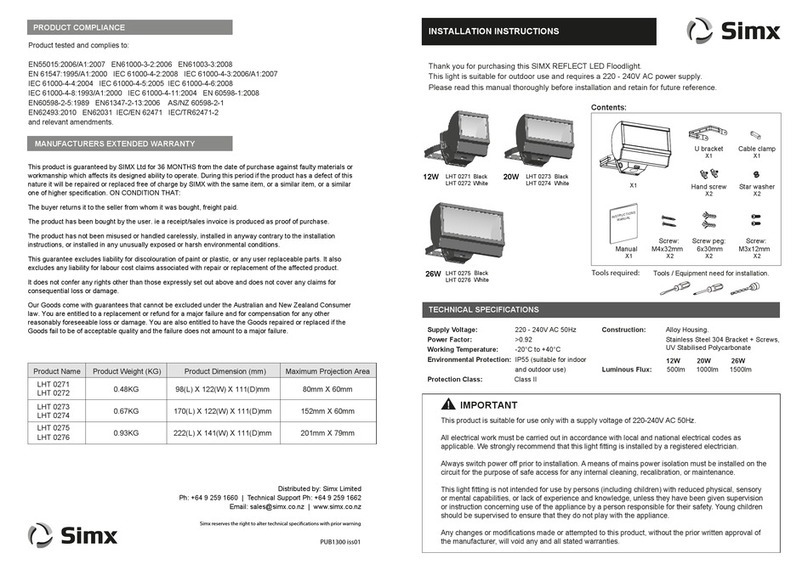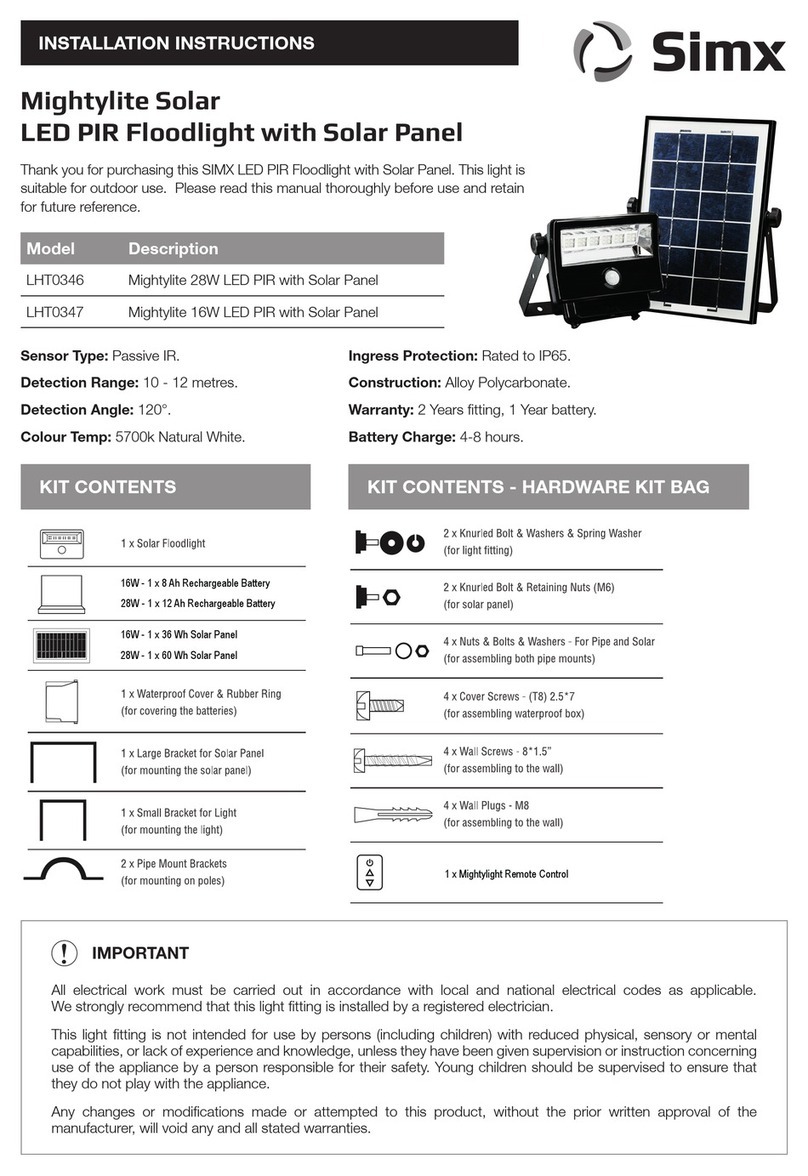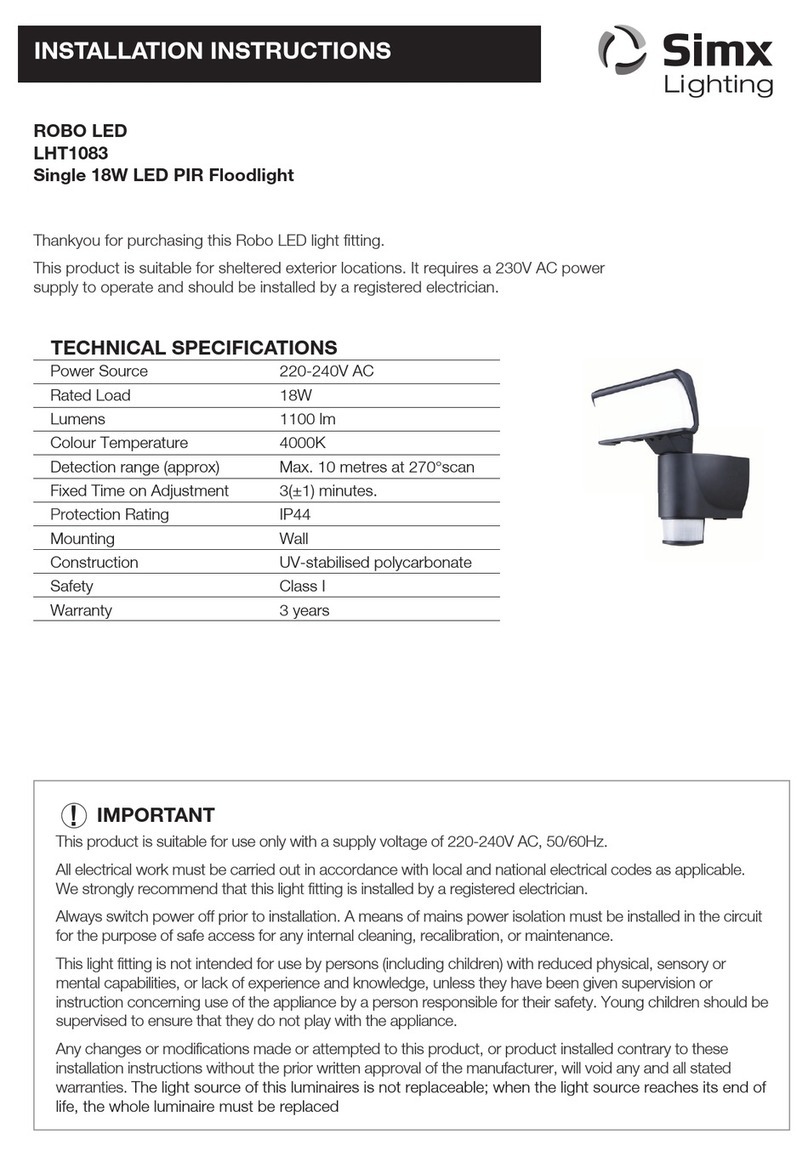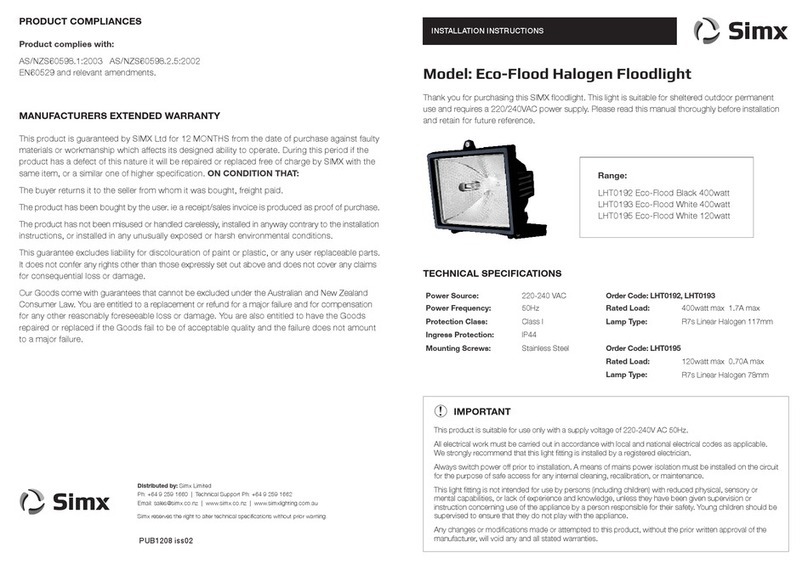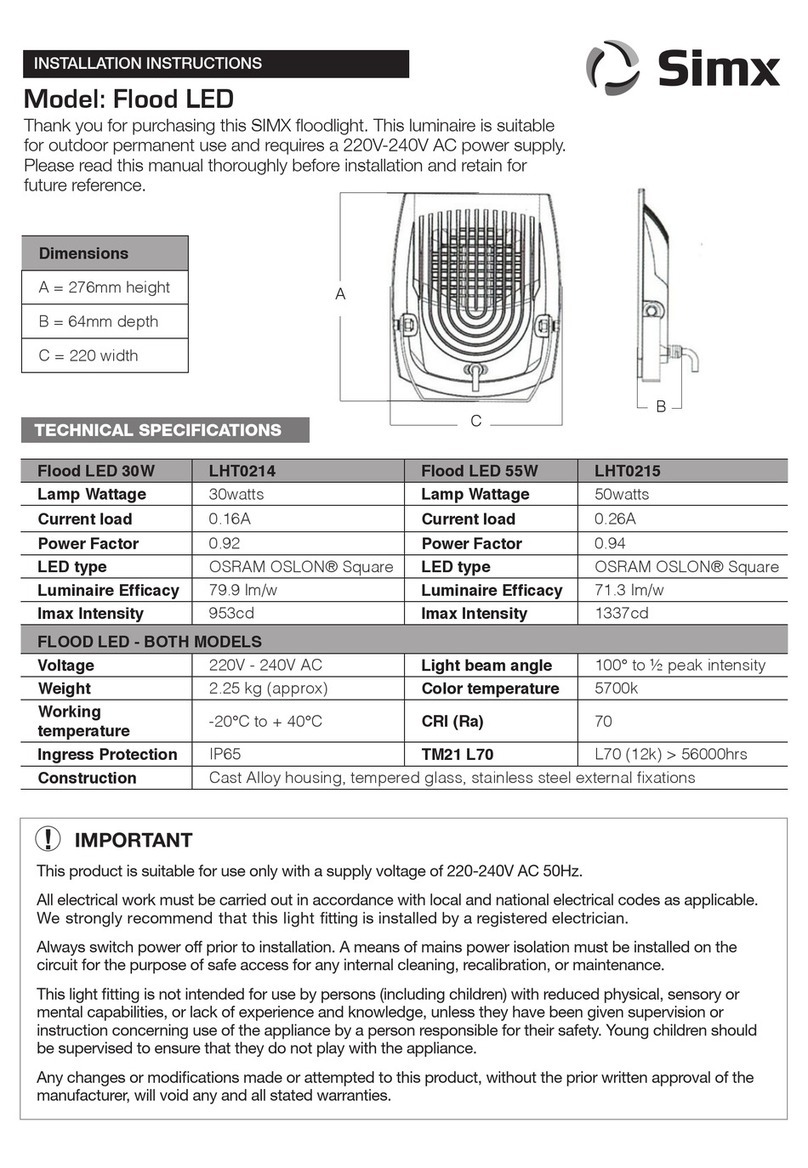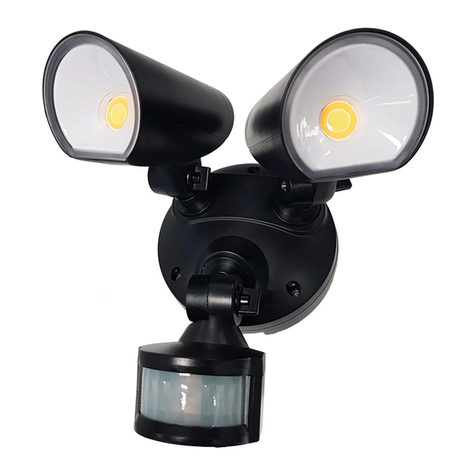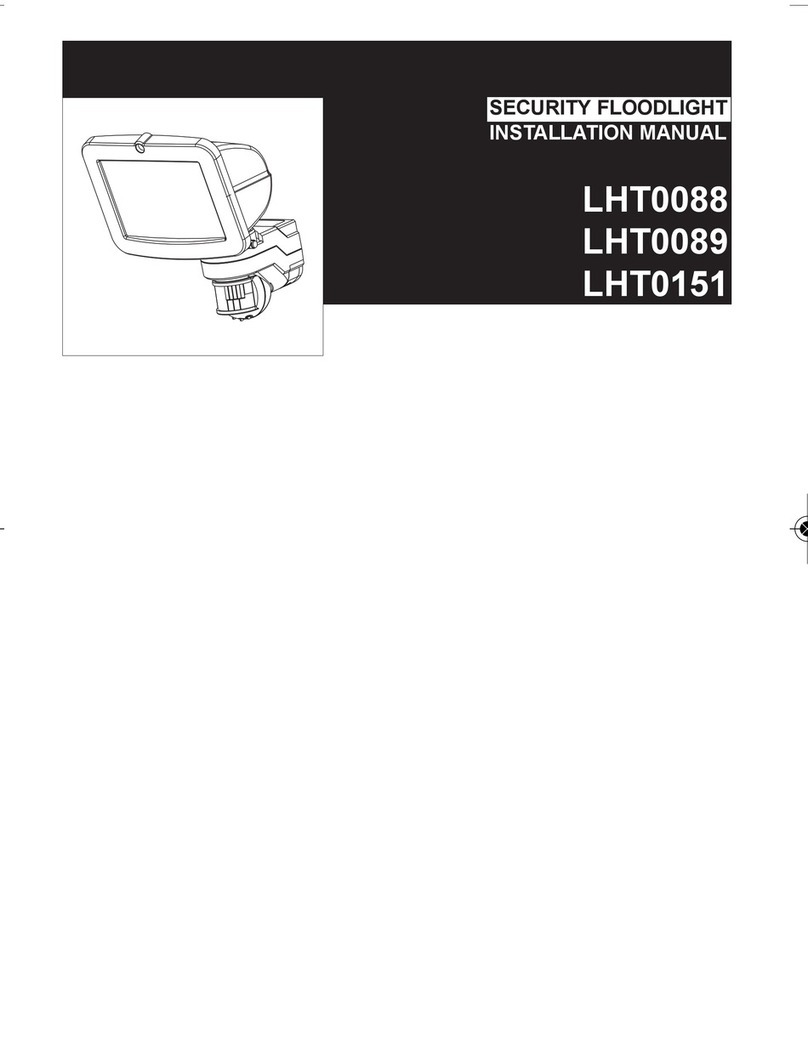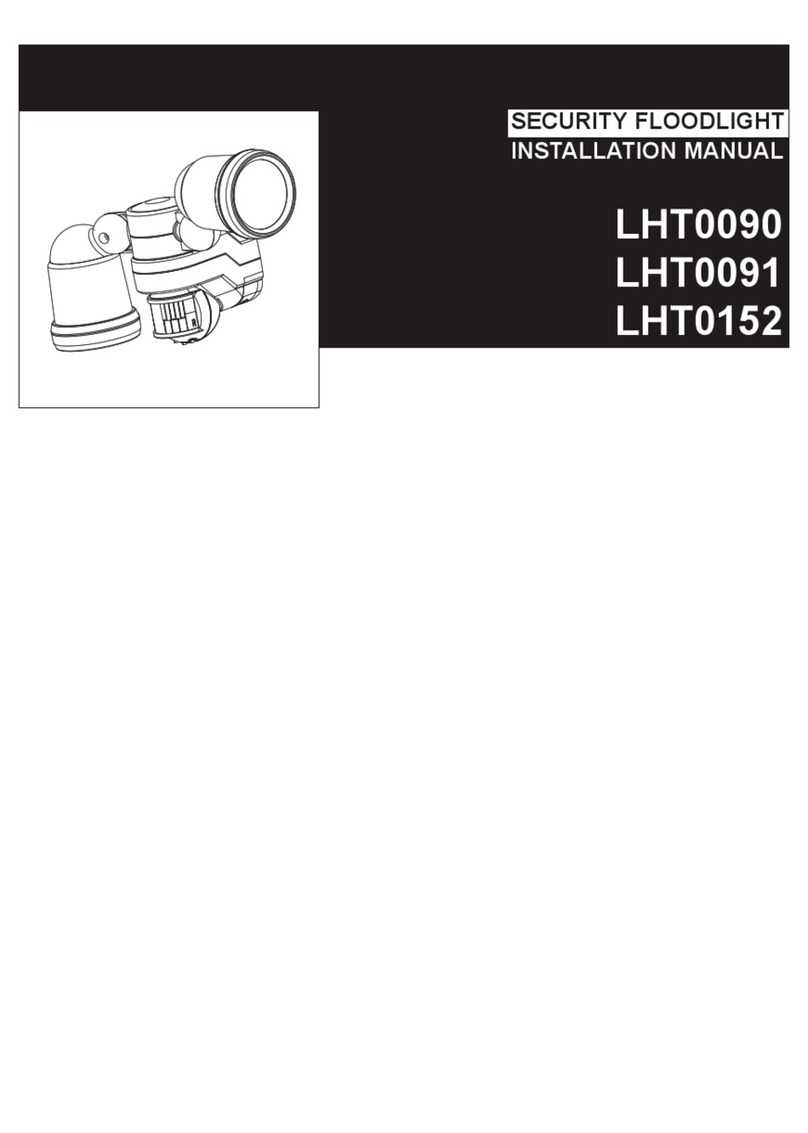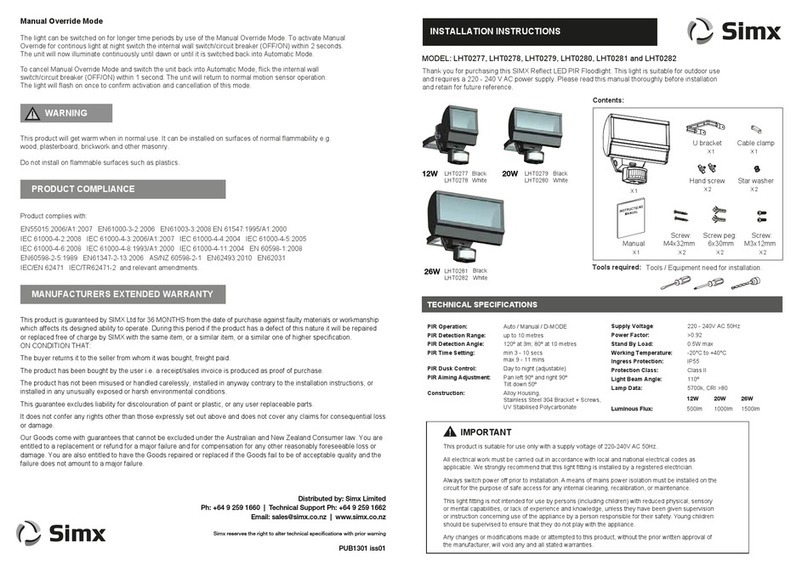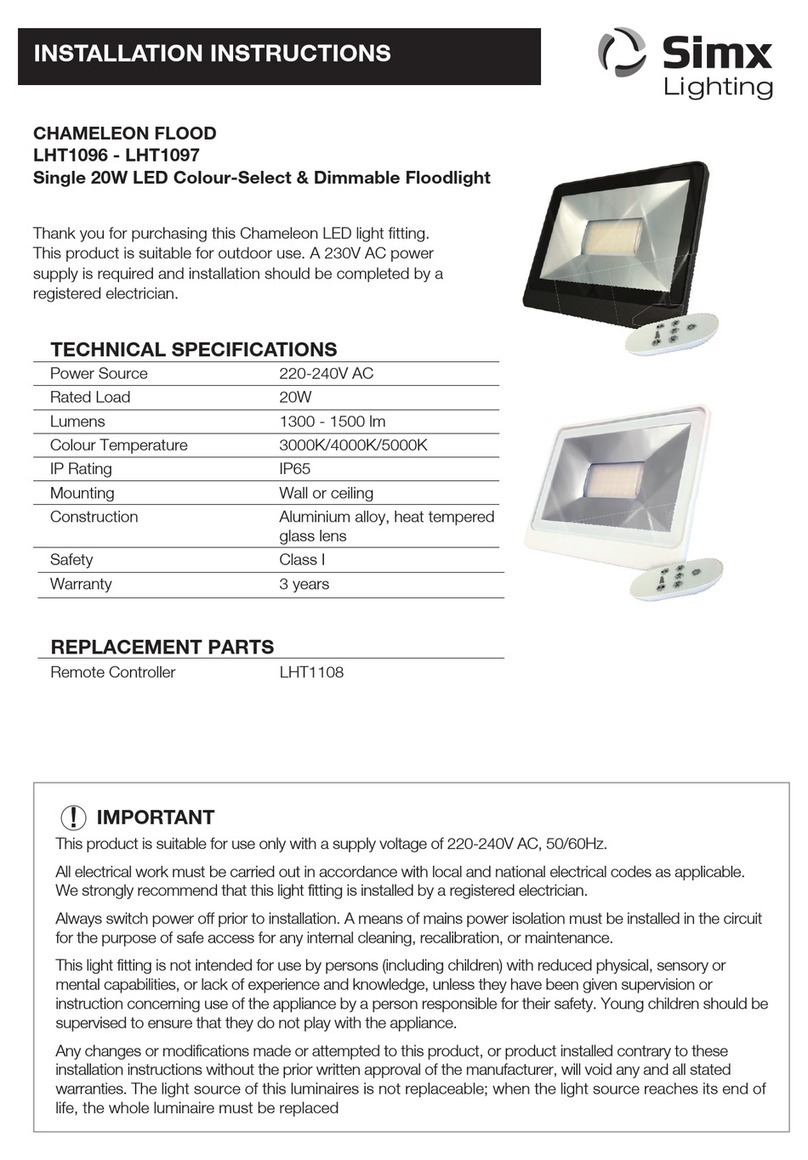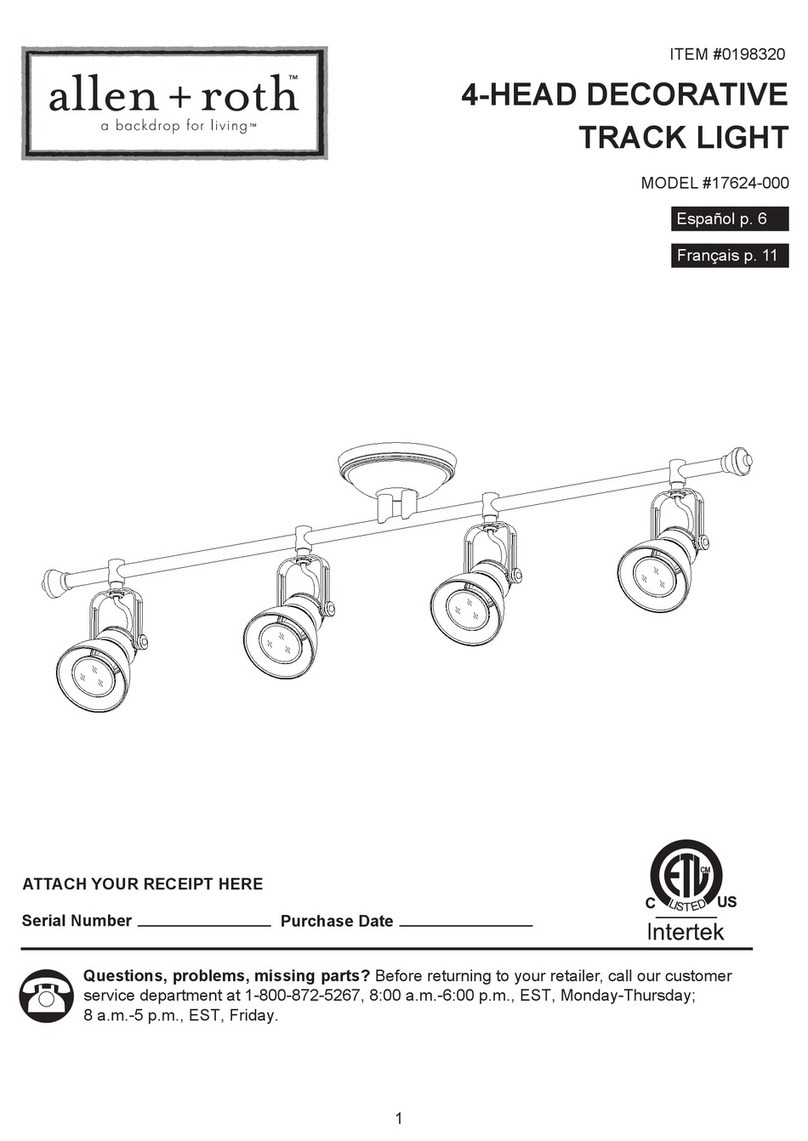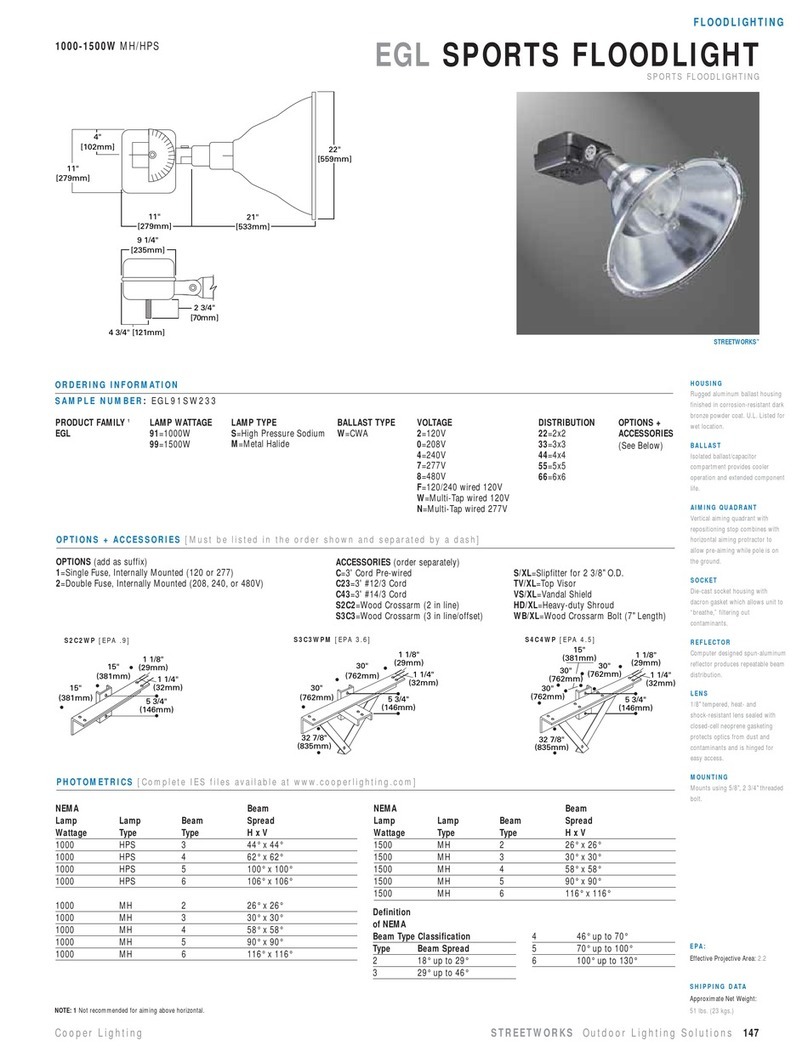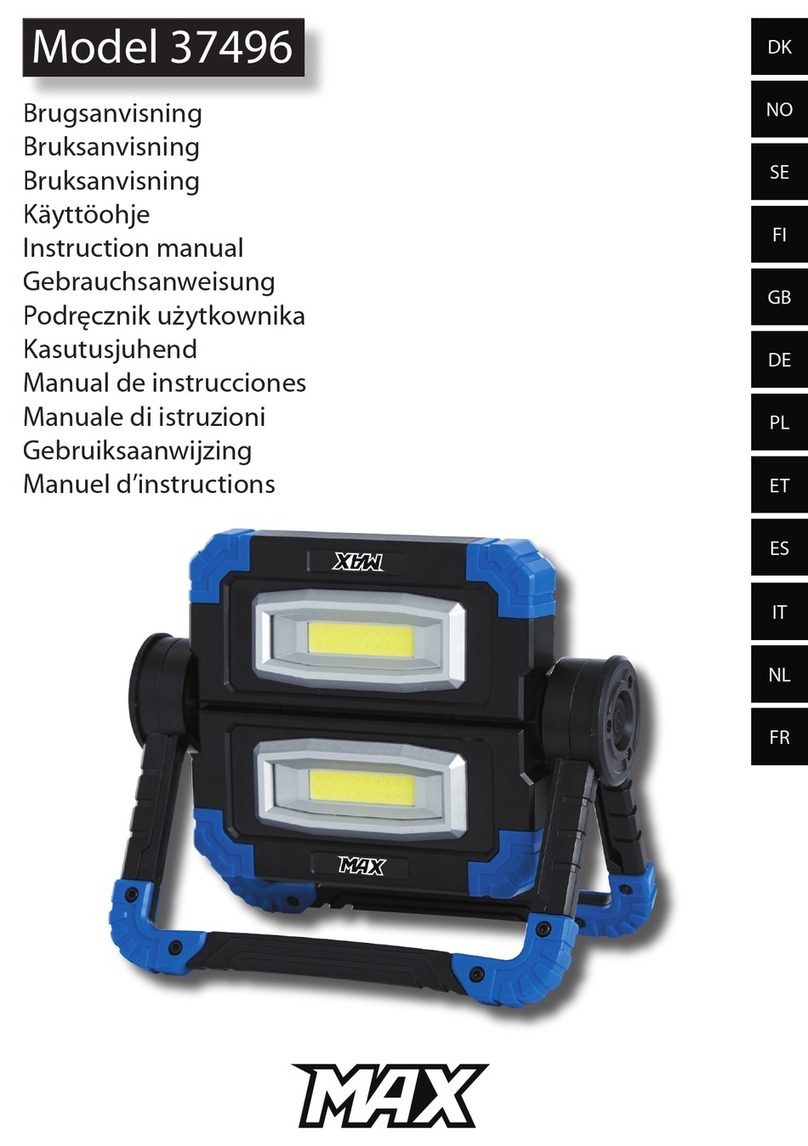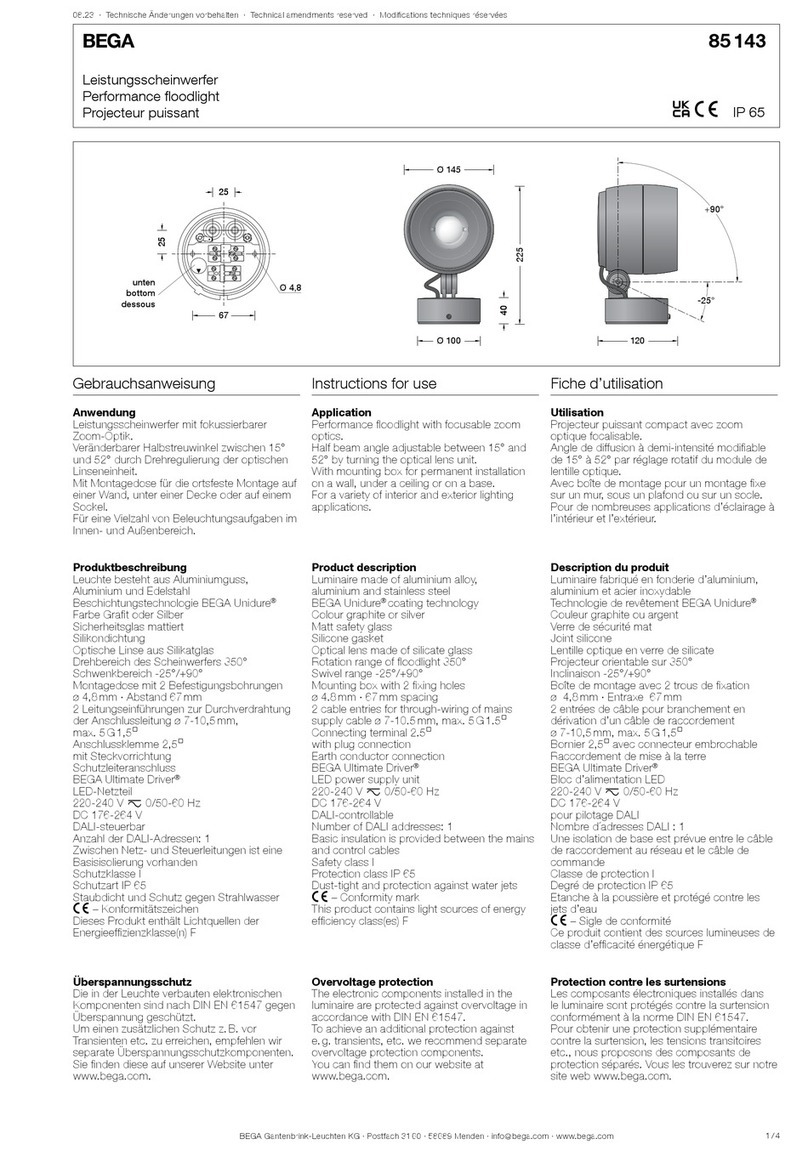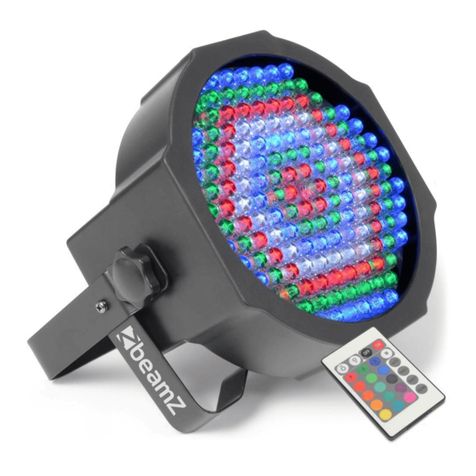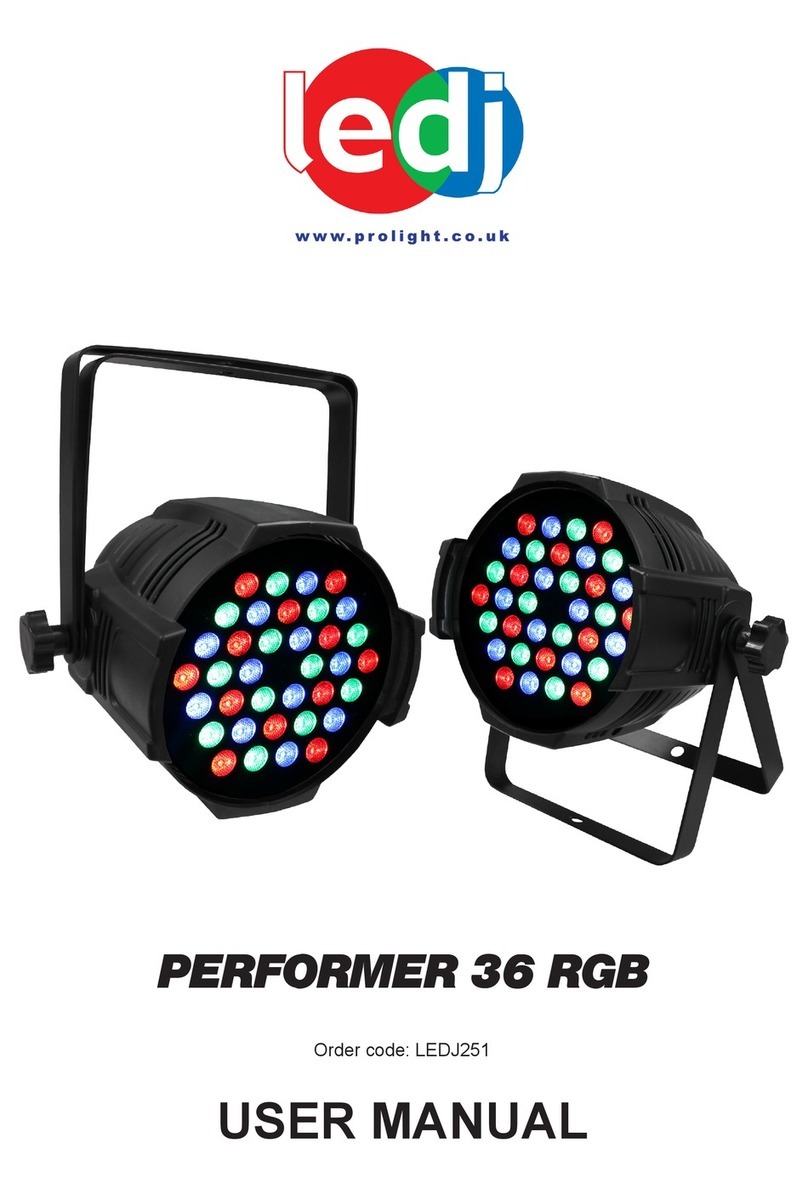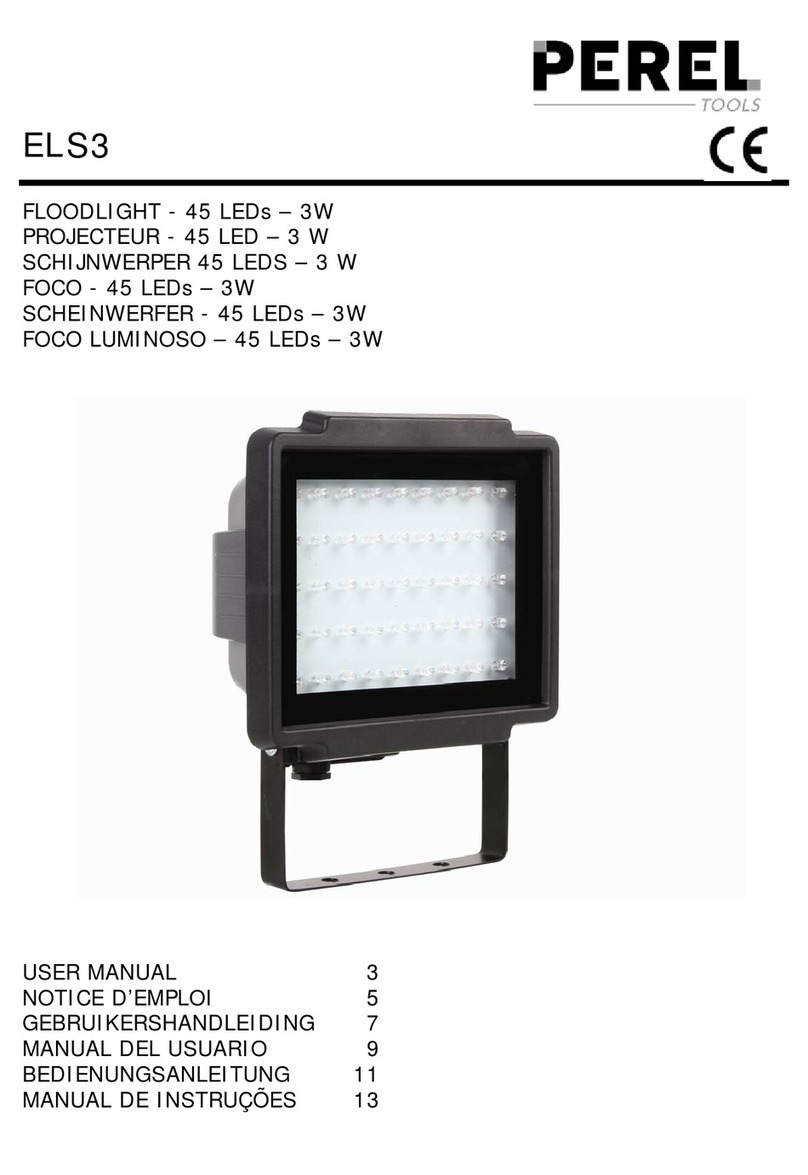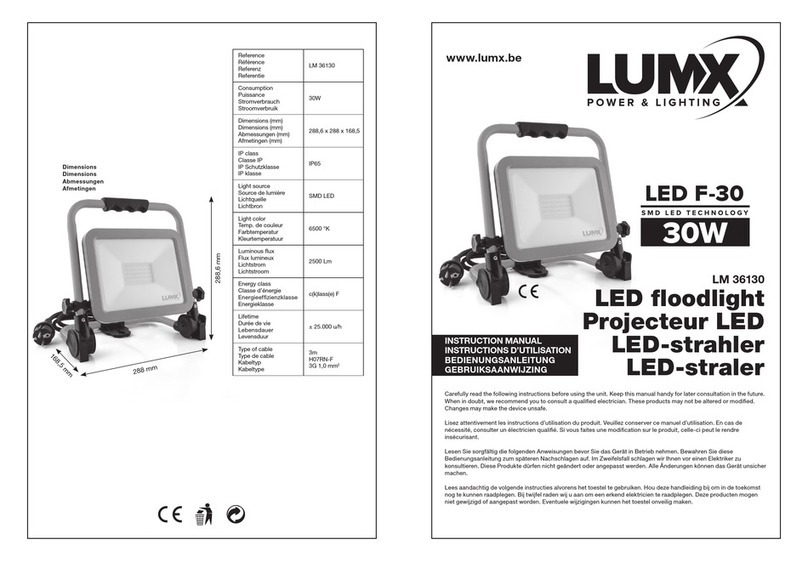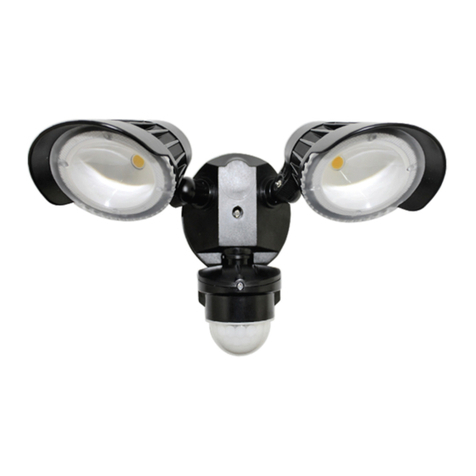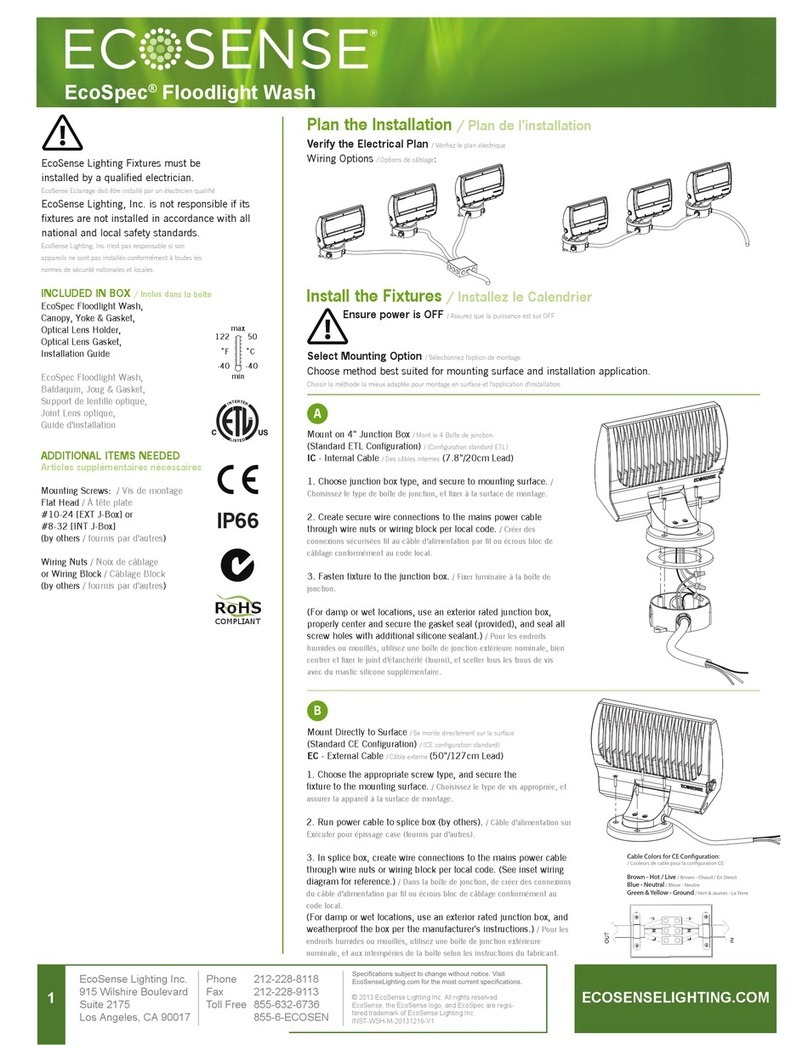
SECTION SIX
TROUBLESHOOTING GUIDE
PROBLEM
oLamp stays ON all the time at
night.
oPIR keeps activating for no
reason / at random.
oPIR sensor will not operate at
all.
oThe PIR sensor will not
operate at night.
oUnit activates during the
daytime.
oPIR coverage is poor/
sporadic.
o Detection range varies from
day to day.
SOLUTION
The unit may be suffering from false activation. Cover the
sensor lens completely with a thick cloth. This will prevent the
sensor from "seeing" anything. If the unit now switches off
after the set time duration and does not re-activate, this
indicates that the problem was caused by false activation. The
problem may be solved by slightly adjusting the direction /
angle of the sensor head (see previous section).Also, the
sensor may possibly be switched into the PMO (override)
mode. Switch off/on quickly to restore to security mode.
You may not be allowing the unit time to complete it's
warm-up period. Stand well out of the detection range and
wait (the warm-up period should never exceed 5 minutes).
Occasionally, winds may activate the sensor. Sometimes
passages between buildings etc. can cause a "wind tunnel"
effect.
Ensure the unit is not positioned so as to allow detection of
cars/people using public thoroughfares adjacent to your
property.
Check that the power is switched ON at the circuit breaker/
internal wall switch.
Turn OFF the power to the unit and check the wiring
connections as per the diagram (see previous section 3).
Ensure no connections are loose.
Check the lamp. If the lamp has failed, replace. Ensure that
the lamp is seated correctly in the lampholder.
The level of ambient light in the area may be too bright to
allow operation at the current DUSK setting. During the hours
of darkness, adjust the DUSK control slowly clockwise until
the lamp illuminates. Refer to previous section for more
details.
The level of ambient light in the area may be too dark for the
current DUSK setting. During daylight, adjust the DUSK
control slightly anti-clockwise. When the lamp load
extinguishes, enter the detection area. If the PIR still activates,
the setting is still too high. Repeat the above procedure until
the PIR does not activate when you enter the detection area.
Refer to previous section for more details.
Unit may be poorly located. See previous section - ‘Selecting
The Location’ and re-locate the unit.
PIR sensors are influenced by climatic conditions. The colder
the ambient temperature, the more effective the sensor will
be. You may need to make seasonal adjustments to the
sensor head position to ensure trouble-free operation all year
round.
